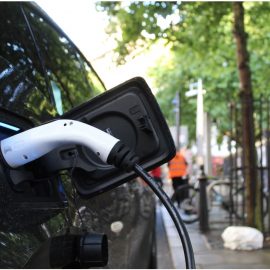

This article is an excerpt from the Shortform book guide to "The Simple Path to Wealth" by JL Collins. Shortform has the world's best summaries and analyses of books you should be reading.
Like this article? Sign up for a free trial here .
How do rich people view money? What role does mindset play in wealth building?
Most people think of money in terms of what it can buy. If you want to build wealth and achieve financial independence, you must adopt a wealth mentality and start thinking about money in terms of what it can earn. With this mindset, even lower-income earners can become wealthy by limiting their spending and investing whatever they don’t need for expenses.
Here is why you should rethink your idea of money if your goal is to build wealth.
Do You Want to Retire as a Millionaire?
Most people don’t start their working life thinking they will retire as a millionaire, or thinking about becoming financially independent so they can quit work as soon as possible. However, any middle-class wage earner is capable of reaching one or both of these goals by accumulating wealth over time through compounding.
With compounding, the money you invest earns interest, and you add the interest to the original sum, making it larger so it earns even more interest. With compounding, a relatively small amount of money invested in stocks grows significantly.
Here’s how it works. Based on the average market return of 11.9% a year with dividends reinvested from 1975-2015:
- If you invested $12,000 in stocks in 1975, it would have been worth $1,077,485 in 2015.
- If you didn’t have a lump sum and instead invested just $130 a month or $1,650 a year for 40 years, you would have ended up with $985,102.
- By simply increasing your $130 a month to $150 or $1,800 a year, you would have accumulated $1,136,656.
This would have happened despite the market ups and downs over that 40-year period, including the 2008 financial crisis.
In terms of achieving financial independence (the point where you can live on 4% a year of your investments):
- If you made $25,000 a year and invested half or $12,500, you could be financially independent in around 11.5 years (drawing 4% a year on accumulated wealth of more than $312,500 and continuing to live on $12,500 a year).
- If you chose to live on your full salary of $25,000 when your nest egg reached $312,500, and just left your nest egg alone for 10 years, it would grow to $961,946 without your adding anything. If you quit your job after 10 years, you could draw $38,478 a year at a rate of 4%.
How to Think About Spending
Many people can’t build wealth because they live a high-consumption lifestyle relative to their income—they spend whatever they make and therefore have no money to save and invest.
Even high-income people have trouble making ends meet or they go broke by overspending. For example, boxer Mike Tyson ended up bankrupt in 2003 despite earning over $300 million—he blew it on fleets of luxury vehicles, Siberian tigers, a 21-bedroom mansion, an entourage of hangers-on, and more.
This is how most people think about money—in terms of what it can buy. That’s also why many lottery winners end up broke within a few years. But if your goal is to build wealth, you must adopt the wealth mentality and view money as a tool for earning, rather than a means for spending.
Even if you overspent in the past, it’s never too late to start thinking differently about money and how to use it. Remember the “simple path” formula: spend less than you make, invest the extra, and stay out of debt—and you can “buy” your financial independence.
Think About Opportunity Costs
Collins doesn’t argue that you should never spend money, just that you should understand all the implications when you do—including the opportunity cost, which is what you give up when you choose one thing over another.
For example, if you spend $20,000 cash for a car, your opportunity cost—what you give up by choosing to spend $20,000—is the interest or dividends the money could have earned had you invested it. If you invested $20,000 in Vanguard’s VTSAX index fund (more on this fund later), it would earn $1,600 a year or about 8%. That’s your opportunity cost for the first year; over 10 years, because of compounding, you’d miss out on earnings of $16,000 (the amount would have been higher had you reinvested your earnings each year).
Similarly, if you take out a car loan and have to make payments for five years, the opportunity cost is not having that money available to invest monthly and build wealth.
However, once you become financially independent, compounding keeps your nest egg growing while you withdraw 4% a year to spend—so spending has little opportunity cost.

———End of Preview———
Like what you just read? Read the rest of the world's best book summary and analysis of JL Collins's "The Simple Path to Wealth" at Shortform .
Here's what you'll find in our full The Simple Path to Wealth summary :
- A simple road map to achieving financial independence and a secure retirement
- How to put your money to work for you as your “servant”
- Why you don't need a financial advisor to help you invest






